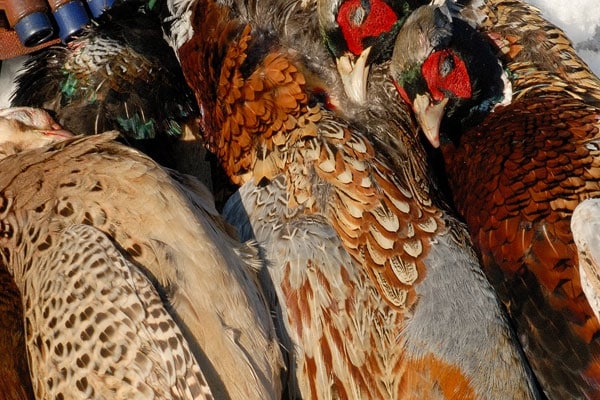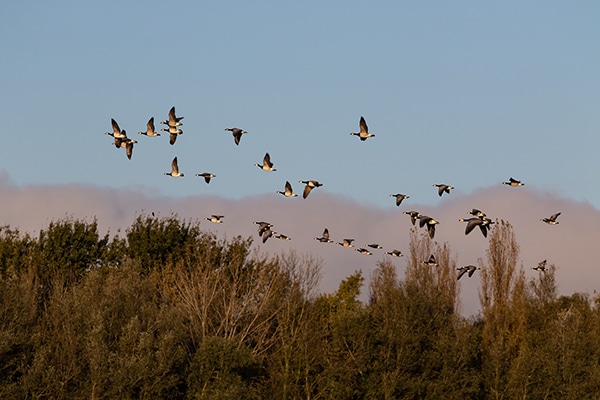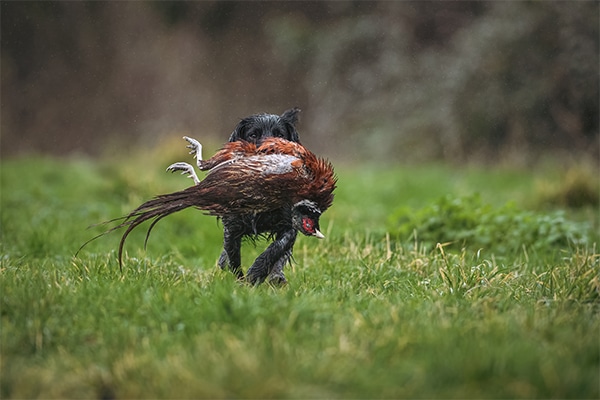
Small game meat hygiene
This one-day course will ensure that shooters can meet the requirements regarding the sale and supply of game.
Get information on the legal shooting season for mammals and birds in the UK.
Learn about our current conservation projects and how you can get involved.
Comprehensive information and advice from our specialist firearms team.
Everything you need to know about shotgun, rifle and airgun ammunition.
Find our up-to-date information, advice and links to government resources.
Everything you need to know on firearms law and licensing.
All the latest news and advice on general licences and how they affect you.

Game Shooting Beating
To experience a shoot day you don’t have to be a gun. Beating and picking up are both essential roles on every shoot, and a great way to get started and see what it’s all about.
Beaters are there to flush out the birds into the path of the Guns, so they have something to shoot.
The beating line (which can range from 3 / 4 to 30/40 beaters) is a vital cog in the wheel of a successful shoot day as they have to work together, at the right pace to make sure the Guns are ready when the birds appear.
Some shoots allow beaters to take their dogs with them, but not all so make sure you check this in advance as all shoots have different requirements.
On a pheasant or partridge shoot as well as regular beaters there are also what are known as stops. They usually stand at the end of the beating line or at points where birds can escape.
There are also different requirements depending on the type of shoot you are working on. If you are beating on a grouse shoot then it is customary (and necessary) to make sure you wear natural tones so no white, or you will be seen by the grouse!
Working a grouse shoot involves a lot more walking than any other type of game shoot, around 10 times more and across more difficult terrain so your footwear is more important than ever. As well as making sure you wear something comfortable you need to protect your ankles.
It’s also good to know that dogs don’t have to be as well trained for grouse shooting because they have so much more ground to cover – they just have to be very willing.
On a grouse shoot there are beaters and flankers – which are usually 3 to 4 people who go at either end of the buts to help direct the birds into the right direction.
If you get given this role, eyewear is essential!
One of the most important things to take on a shoot is a good quality coat that will keep you warm and dry – but not necessarily an expensive one as you will be tackling thick cover and sharp branches so rips and snags are common.

This one-day course will ensure that shooters can meet the requirements regarding the sale and supply of game.

The Wild Game Guide provides information on the hygiene regulations for food businesses that supply wild game for human consumption.

This advice aims to provide guidance to newcomers and acts as a reminder to those with experience of using dogs as part of a team of pickers-up.
Sign up to our weekly newsletter and get all the latest updates straight to your inbox.
© 2023 British Association for Shooting and Conservation. Registered Office: Marford Mill, Rossett, Wrexham, LL12 0HL – Registered Society No: 28488R. BASC is a trading name of the British Association for Shooting and Conservation Limited which is authorised and regulated by the Financial Conduct Authority (FCA) under firm reference number 311937.
If you have any questions or complaints about your BASC membership insurance cover, please email us. More information about resolving complaints can be found on the FCA website or on the EU ODR platform.
This website uses cookies so that we can provide you with the best user experience possible. Cookie information is stored in your browser and performs functions such as recognising you when you return to our website and helping our team to understand which sections of the website you find most interesting and useful.
Strictly Necessary Cookie should be enabled at all times so that we can save your preferences for cookie settings.
If you disable this cookie, we will not be able to save your preferences. This means that every time you visit this website you will need to enable or disable cookies again.
This website uses Google Analytics to collect anonymous information such as the number of visitors to the site, and the most popular pages.
Keeping this cookie enabled helps us to improve our website.
Please enable Strictly Necessary Cookies first so that we can save your preferences!
More information about our Cookie Policy